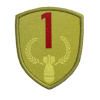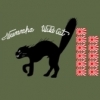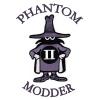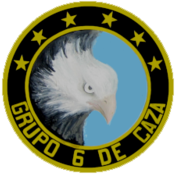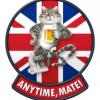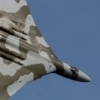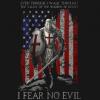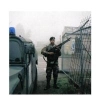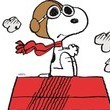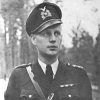Leaderboard
Popular Content
Showing most liked content on 03/02/2022 in Posts
-
5 pointsAirbus Industries "Orkan", licence built Tejas, in german service. Engine EJ200, missile armament IRIS-T, gun BK-27.
-
5 pointsyes it will be , but in the moment i´m not able to mod because of my health problems , i may be able in the second half of this year slowly to start modding again ( i hope ) , so it will take a while until this pack is done i may release a part of it , the rocket launchers and rockets , as part 1 of the pack because the pack is simply to big to upload it as one pack so please be patient , and i'm sorry for all the delays but i will do my best to get it done
-
5 points
-
3 pointsWell, it'll be a Heather Ferris inspired scheme. It's not exactly what I wanted, but it'll look something like a Ferris scheme:
-
3 points
-
2 pointsalthough im guilty of it too, this is what i imagine on ravenclaw's side whenever we ask about another weapon seriously tho, get some rest. youve done quite a bit for us already
-
2 points
-
2 points
-
1 point
-
1 pointThere is absolutely no rush my friend. Take all the time you need to recuperate. Best wishes from this end
-
1 pointHope you're feeling better soon @ravenclaw_007, the number one important thing is your health, modding can wait.
-
1 pointHi @ravenclaw_007 the important thing is you getting better. My prayers go for your speedy recovery.
-
1 pointThere was a time when the US weapon effectiveness was very close to historic numbers from Vietnam and Israel. Toward the end of Strike Fighters development, financial considerations drove Third Wire to focus more on making the game fun for casual players than hard core people wanting realism. Suddenly, early AIM-9s and AIM-7s behaved a lot more like later AIM-9s and AIM-120s.
-
1 pointThe main issue I have when flying Red Air is Sparrows kicking me in the face once Phantoms become more common, when in reality most of those shots wouldn't have been taken without ID being possible, you could reduce Sparrow's theorical rmax range to represent that. Other than that, early on, I would take a MiG-17 or a MiG-19 (stock) against pretty much everything in a dogfight. If you mean with mods, it is pretty much how they are set up. Not that it is completely unrealistic though.
-
1 point
-
1 point
-
1 pointStill Voodoo time :) 2 scheme from Maple Flag '83 (the camo one need to be worked on as it was done with water paint and a mop and did not lasted long :)
-
1 point
-
1 pointJean-Fidele Hierrot, January 1916 (Part II) The first thing to hit Jean-Fidele about his transfer to Escadrille N26 was the snow - snow everywhere. Not enough, though, for after hitting the ground, the thin white coating seemed to melt into a sticky brown sludge. There was no way Jean-Fidele could even take off in such weather, which was just as well: this gave him time to get acquainted with his new squadron mates. Capitaine Blaise Gallet stood out immediately - in part because Jean-Fidele arrived on what happened to be the day that Gallet was awarded his 5th confirmed victory along with the Chevalier de la Legion d'Honneur. Dressed up in a stiff, formal business suit, Gallet had the fresh, stern sort of face that could pass for 20 as easily as 60. Passing up the usual formalities, Jean-Fidele was impressed with the way Gallet cut straight to a discussion of air combat tactics and maneuvers. "So I understand you're a bit of an expert in all this, right?" "I mean...Escadrille N12 had me teach how to do what we do. Not too many people died in the process." "No deaths? Oh my - how are you going to win a war if you can't kill any Germans?" "Oh, see, I wasn't counting those." "Ah, that's quite fair enough. I, too, am of the opinion that enemy lives don't matter. So you have seen a lot of dead Germans." "Yeah, rivers of blood. We used to drink the stuff when the wine ran out." Jean-Fidele thought back to the piece of Aviatik linen still in his pocket. Gallet went on to share some intel with Jean-Fidele about the German marine squadrons in the region, the dreaded Fokker scourge, and a combat maneuver he'd been developing - one where he started attacking from above, firing while swooping down, only to pull up into a near-stall, turn back and fire again. "And this stall turn, it saves time on having to turn all the way back around to get on the enemy's tail. Less time, less time to think up a counter-maneuver." "You'll have to teach me some time, Capitaine." "With pleasure." *** Apart from some brief patrols to get familiar with the area, Jean-Fidele's first real mission was a balloon-hunting expedition, in which he would accompany Capitaine Gallet and Sous Lieutenant Joseph Mara. Jean-Fidele had only limited experience attacking non-airplane targets, and this was his first time ever loading up on Le Prieur rockets. Behind German lines, Gallet gave the signal to descend upon the enemy observation balloon - but, embarrassingly for Jean-Fidele, he could not find it. He looped around, turning his head every which way, at one point even flying upside-down for a moment so he could look straight down at the ground, but he just simply could not find the damn thing! ...That is, until Capitaine set the balloon on fire for his 7th victory. And also his last. For, even though the observation balloon was down, there was still the question of exit strategy. Getting back home from behind enemy lines, surrounded by enemy antiaircraft fire, was no mean feat. Unfortunately for Gallet, enemy fire was directed straight at him, as the ground units identified him as the pilot responsible for rocketing their observation balloon out of the sky. Jean-Fidele and Joseph Maria simply slipped out of sight, out of mind, back to St. Pol-sur-Mer, having witnessed their captain's demise. Gallet was credited posthumously for his 7th confirmed victory. B Flight, reduced now to Jean-Fidele and Joseph Maria - himself an ace with 6 credited kills - intended to remain grounded until receiving further reinforcements. That decision fell to the wayside on 17 January, however, when Aviatik two-seaters were sighted heading inland from the Channel. This was it: another scramble mission, bringing back so many memories from Rosnay. Joseph demonstrated his considerable skill in this pursuit; he'd been reputed to show good control of his machine, and solid nerve in combat. Jean-Fidele was used to flying with flightmates who might slip a bit in a stall, or who might take forever to get to altitude. Not so with Joseph Maria, though - this was a pilot who could keep up with Jena-Fidele in pursuit of the enemy two-seaters. Jean-Fidele could tell his shot was a bit rusty: he estimated that he only got about 12 or 15 hits out of his first 47-round drum unloaded upon one of the two Aviatik C.I's. As he turned back to strike again, though, he struck the Aviatik's inline engine on the second drum and watched the two-seater crash to the ground. That left Jean-Fidele with precisely 47 rounds with which to take down the second Aviatik - one which Joseph had given his best, but had evidently run out of ammunition and was now turning back home. Jean-Fidele figured he had one pass, maybe two at most, to take this two-seater down before it returned back to German lines with untold amounts of new intel. From about 40 yards, Jean-Fidele struck, releasing all 47 rounds in two carefully directed bursts well within the propeller's arc. This felt like Jean-Fidele's best work all day - at least 20 hits out of that drum, he figured. Yet the two-seater kept going, regardless of all the new-found bullet holes. Jean-Fidele had failed. Except...maybe not. As Jean-Fidele was turning away, he looked back one last time and noticed the Aviatik's propeller had stopped. The engine was dead. His opponent was going to try to glide back home - and given the altitude, he might be just close enough to pull it off. While Jean-Fidele didn't have any bullets, he did have one thing left: his Nieuport 10. To stop the Aviatik from making it back over the frontline, Jean-Fidele began repeatedly flying directly towards the face of the enemy, threatening a collision. If he could force the pilot to change course, he could spoil any chance of escape. And much to Jean-Fidele's surprise - it worked! After a couple swooping dives straight at the pilot's face, the Aviatik diverted course and Jean-Fidele maintained pursuit over a forest. The two-seater cleared the edge of the woods before making a shallow crash within sight of two Allied observation balloons - witnesses for Jean-Fidele's 15th confirmed victory. Jean-Fidele was notified of the confirmation the next day, as he was preparing to go on leave. END-OF-MONTH STATS, JANUARY 1916 Missions: 97 Flight Hours: 117.08 Confirmed Victories: 15
-
1 pointJanuary 26 Photo recon to Messines Ridge. It started like usual.When we were home return,Aa smokes appeared further.When nearer,little spots were seeing.Dogfight! Battles raging at land and in the air.Ypres Sector. We joined this consert where Fokker Eindeckers and Bristol Scouts fighted.We succeed shoot couple of bullets but EA escaped! On the way home,far our side,we spotted lonely Nieuport.Began dogfight where we both tried to get tail.Several burst Eberhard shoot him.Some point enemy gave up and disengage battle. I followed and i noticed we were faster than his bird.He get lower and lower.The trenches were shot violently.Suddenly Nieuport curved tightly and smashed to the ground! I was sure our bullets had wounded the pilot,so we claimed a victory.We'll see if infantry guys agree this!
-
1 pointOh damn it, Mfair - I didn't notice that Gallagher had been killed! Sorry to hear that, he was off to such a good start in this DID. Better luck with you new pilot! Paroni, what a great photo of those infantrymen helping the aviator! *** The War Diary of Auguste Besson, Escadrille N.23, part 8. New year began with poor weather, but we still kept up our regular schedule of patrol missions over the front for as much as the conditions permitted. On January 3, we received orders from the army headquarters: our escadrille would be transferred from the Second Army to the Fourth, which was holding the Reims front on our left flank. We would also relocate to the Melette aerodrome, which was located about 15 km west of our field at Somme-Vesle, closer to the cities of Reims and Chalons and the river Marne. One of our jokers immediately suggested that the reason for the transfer must have been General Pétain’s inspection back in December: having personally witnessed our escadrille, he wanted to get rid of us as soon as possible. I found this hilarious, but Captain de Beauchamp was not so amused. The actual reason was much more mundane: the Fourth Army had received a new commander, General Henri Gouraud, the one-armed hero of the Dardanelles, and was in need of additional air units. Since it was such a short trip to Melette, we simply flew our machines over there while the ground crews took care of the rest. Melette itself was another medieval village typical of the region with very little to distinguish it from Somme-Vesle or any other similar community near Chalons. There was a field, brick buildings for housing us, and tents and huts for the machines. Moving over was therefore a simple affair for us pilots. On January 20, a flight of our Nieuports was patrolling the front close to Reims near the border between our Fourth Army and the Fifth to the west of us. Visibility was rather poor, and we were flying at about 2000 metres. Boche anti-aircraft fire was surprisingly heavy on that sector, and suddenly a shell exploded close to my machine. I remember a flash, after which everything went black for a while. I lost consciousness for a moment – it could not have been for more than a couple of seconds, or I would have surely lost control of my machine and spiralled down to my death – and when I came to I felt a pain on my left temple, my ears were ringing, and my vision was blurry. My pilot’s goggles were also partly covered in blood, which further reduced visibility. Despite everything I managed to regain control of my machine, and ignoring the pain, turned my head left to observe what damage, if any, my Nieuport had suffered. I could see several tears in the fabric of both wings, but there was no obvious of serious damage to the structures holding the wings together. Nevertheless I was in a very dangerous situation, not knowing how badly my head had been hurt or whether I would be able to stay conscious for much longer. My comrades had seen that I was in trouble, and the Marquis (Jean Casale) was flying quite close to me on my left wing. I motioned with my hand that I was injured and had to abandon the mission. Then I slowly turned my machine back towards Melette, trying to avoid putting too much stress on the damaged left wings. The cold weather and rain actually seemed to help me clear my mind, though they also did much to exacerbate then pain in my head. I could feel, and see, that I was bleeding pretty badly. Hoping and praying that my luck would hold I flew back towards Melette. It was not a long flight – only about 20 minutes – but in my weakened condition it felt like hours. When the field and its hangars became visible in the drizzle, I felt a sudden surge of renewed strength – maybe I would actually survive! I have no clear recollection of how I managed to land my plane in the end, but I was later told that it was a good landing and that I was found in the cockpit, bleeding and unconscious. The medics gave me first aid on the field, after which I was taken to a military hospital in Chalons, where the surgeons sewed my scalp back together. Apparently I was indeed lucky, for if the shell fragment had hit my head in just a slightly different angle, it would have split my skull open. However, the headaches resulting from the injury made sure that I did not consider myself overly lucky during the three weeks I had to stay at the hospital. TO BE CONTINUED... Auguste's career very nearly came to an end in this encounter with the boche flak! It's no fun trying to made it back to your own lines when the screen is red with blood and you can see the health of your pilot steadily dropping down! I took a screenshot too, but must have pressed the wrong button because it wasn't there. So Auguste is now out of action until early February, in-game time.
-
1 pointSorry, one of my laziest yet. Probably will spend more time writing the post than making this. In the early 40s, many of the factions who supported Franco during the Spanish Civil War had become disenchated, seeing Spain as subservient towards Nazi Germany, seeing no signs of restoration and watching other fascist dictatorships fail, and by 1944, with the Allies landing in Normandy and making a German intervention all but impossible, took the opportunity ousted the General in favour of Juan III, heir of Alfonso XIII, last king before the Republic, which in turn reinstated a constitutional monarchy, who joined the Allies against Germany, although by that time and still in poor condition after the war, there wasn't much Spain could do to contribute to the Allied war effort other than seasoned veterans and new supply and attack routes. Having been trained by the Royal Navy, Juan III was considered an Anglophile, and during the efforts to rebuild the country after the war, the Gloster Meteor became the first jet fighter of the Spanish Air Force, seeing combat in Korea and Western Sahara. Stock F8, Syrian camo with arab numerals replaced with the Israeli ones. It really took me more time to come up with the alternate story than getting the skin. Edit: Just felt like I had to add some more. After Korea, it was clear the Meteor was useful but obsolescent, and a new fighter was needed. While the Hawker Hunter was promising, it was the Canadair Sabre Mk6 that was selected This is my FrankenSabre. I couldn't stop getting the proper Mk6 to stall and spin, but the F-86F40 was foolproof enough to me, so I copy-pasted an Orenda on it along with a ton of other things. It has so many mismatched parts I can't credit properly, but to name a few, Zur, Wrench, PauloPanz... The skin was Ethiopian, I think, but could be Iranian or South African It is indeed Strahi's Ethiopia, butchered a bit. I just had several generic looking ones made to save space.
-
1 pointFlight Lieutenant Theodore Aloysius Andrews aka 'Runt' DSC HQ Sqn 1 Wing RNAS in Flanders Part 17 (Jan 1st-Jan13th) Wonderful news cousin Archie (see January 30th) has been given notification of flight training at the Central Flying School, I am utterly delighted and hope one day to fly with him in combat. During bad weather my rigger, mechanic and I managed to personalise my Nieuport 11- I'm quite pleased with it. We decided to keep the bee and lightning strike as it seems to have been noticed up and down the lines. The first few days of January the flying was hampered by the weather. Finally got airborne on the 4th, 15 minutes into the flight I started getting engine problems so had to hand over the flight to Keeble who took charge. My blasted plane took 2 days to repair airborne again on 6th a patrol of our troops. I was flight commander, flying with Keeble, Mulock and a fairly new chap Lathern, only allied aircraft spotted. I was grounded for a few days and was next up on 13th escort duties for Rod Dallas flying 'A'. Spotted 3 Aviatiks crossing our lines so I gave the order to pursue ( Dallas was quite safe) We engaged and destroyed all three. I got a share in one and forced down another - all three were denied us by the powers that be. Then escorted Dallas home. To Be Continued ...
-
1 pointMFair – So Gallagher has graduated to a Bristol. Hardly seems fair for the poor Huns, having to rassle with a genuine gunslinger like Elijah. Congratulations on your first confirmed victory. (I have just read your post, which went up as I was writing this. If you don’t mind, I won’t change this story, but I will make it match your post in the next instalment). Albrecht – Good advice to the Nieuport jockeys about the blip switch being their friend. You have to handle those machines as if they were made of eggshells, because basically they are. Paroni – In a few short months, we will all look back fondly at the quiet two-seater patrols of late 1915 and early 1916. Seb – Congratulations on entering the double digits so early in the war. Now with the Nieuport 11, Andrews will be unstoppable. I am enjoying your videos on YouTube. Well done with the narrations. Andrews is well rid of Ackers for now, but I suspect we shall be seeing him again. Albert – Lovely Paris story. Hobnobbing it with the elite of the Aviation Militaire, are we? Better make nice with the Campaign Moderators because you never know when one might get transferred to a Caudron unit in the Alsace…Bwaahaha! Mind you, Sid earned some credit in the eyes of the gods by resisting the temptations of the beautiful Sophie. He is the one in a thousand who would have done so! And congratulations on the in-game promotion. Hasse – I enjoyed reading about the general’s inspection and I loved the touching 1915 French Christmas cards with their vain promise of victory in the coming year. War Journal – Sergeant David Armstrong Hawkwood 4 Squadron, Royal Flying Corps Marieux, France Part 10 Thus far, 1916 has been indistinguishable from its predecessor. Orders continue to grace me with the privilege of flying the early patrol most of these winter mornings. We now fly reconnaissance after reconnaissance, and Mr Clapp in the front seat and I in the back together stand watch while Mr Needham and his observer photograph the same stretch of trench lines from Courcelette down to Guillemont. Each day, the same nasty Hun battery fires the same nasty Hun Archie at us from its position near Delville Wood. The same three circuits take the same ninety minutes. The same bumps and bounces greet us at the same frozen field. And the same sullen mess steward serves up the same overdone boiled eggs. The only variety is the regular cycle from snow to mud and back to snow. Still no sign of the dreaded Fokker. We have lost two machines this month yet know nothing of why. They went out in the morning and simply failed to return. I suspect our friends at the corner of Delville Wood have something to do with it. Received a wonderful parcel from home. Mum enclosed a tin with her outstanding Christmas fruitcake, swaddled in cheesecloth and soaked in brandy, with big pieces of ginger amidst the fruit and nuts. Ned mentioned something to me about not liking fruitcake so that is my licence to hoard this treasure. Dad included a note saying that he presumed I smoked now like the rest of the army, along with a very fine pipe and rich burley tobacco. There is little new on the home front. I have written that I am perfectly safe here with very few Huns about and Dad has responded that I should put in for a transfer back to England to shoot down Zeppelins. The short winter nights have put a stop to their raids on England for now, he said. I am a terrible correspondent, but I took advantage of a spell of bad weather during the second week of January to catch up on all my correspondence. Mr Cust, the gentleman who employed me as his personal chauffeur and who paid for my flying lessons, was kind enough to send me a Kodak vest pocket camera along with a request for photographs about life in the Flying Corps. It is strictly against regulations to be taking such photographs, yet I see many of the officers posing for snapshots quite openly. Still, I think I shall be cagey around Sergeant Major Parson. We have had another good helping of snow. Flying over the countryside at two or three thousand feet is a remarkable experience, especially in the early morning when the sun is low in the east and each bare tree extends along finger of shadow across the icy fields. When we have had high winds, they sculpt crescent-shaped waves around each tree trunk. The scene is magical. 31 January 1916 – It has been more than a week since I last wrote in this journal. On 28 January, last Friday, I had a chance to lead a patrol. We were given the task of spotting for the artillery, together with the use of the machine with the lightweight wireless transmitter. Our friends on the ground were a siege battery and their target a group of buildings just behind the Hun lines that were suspected of housing a headquarters. We had several machines in various states of disrepair and as a consequence were assigned only one other BE2 for protection. And that machine was piloted by the squadron’s newest arrival, a Second Lieutenant MacArthur, together with an equally new observer whose name I did not know. We flew in icy clear sky to a spot north-east of Fricourt where, at only 5000 feet, we began our slow progress around the target. Our task brought us to a piece of the front directly above our old nemesis at Delville Wood, who immediately laid on an impressive reception. The sky around us erupted in greasy black puffs and bright flashes. Splinters must have been everywhere. One struck a glancing blow on the right exhaust, making quite a gong. Mr Clapp signalled to me and pointed astern. I turned to see that Mr MacArthur’s aircraft had turned west and was losing height. Clearly the Delville Wood boys had scored a hit. We continued alone and finished the job. The big guns turned the suspected headquarters into a cloud of brick dust, and we headed for home with a farewell cluster of Archie bursts in our wake. I was relieved to hear later that Mr MacArthur had successfully put his machine down a little inside our own lines. The big news came last night when we received orders to pack up and move to the aerodrome at Marieux, outside of Doullens. As Ned was engaged most of the night in dismantling and loading the squadron machine tools, I went to our billet and packed his gear as well as mine, and then arranged for a tender to bring our kit back to Allonville aerodrome to be placed on the proper lorry for the move. Then I had to obtain a packet of French money from the RO to pay the Blandurels for our accommodation. Mr Blandurel insisted that I share a brandy with him. At 10 o’clock, I excused myself to get a decent night’s sleep before an early morning pickup to take us to the field. Marieux aerodrome is a lovely open field a little north-east of the village of the same name. We are to share the field with 8 Squadron, another BE2 unit. Our first day there was taken up with unpacking and organising. All personnel are housed in canvas-sided Armstrong huts, each with a single coal-fired stove for heat, and each housing six NCOs or eight other ranks. I am uncertain about the officers’ accommodations. Once my personal kit was squared away, I reported to the Warrant Officers’ and Sergeants’ Mess, yet another Armstrong hut, or rather two joined together. There we laid out our threadbare carpets and set up tables, chairs, and armchairs. A makeshift bar was assembled from crates and doors. It will do until we can commandeer the carpenter shop to make something proper. Late in the day, the kitchen stewards laid on a beef stew with some excellent bread they bought in town. A keg of beer was tapped, and we drank to our own good fortune and the Kaiser’s demise. Three NCOs visited from 8 Squadron and invited us to join them for dinner the next evening. To my delight, one of them is also a pilot. We didn’t get much time to chat, although I came away wanting to see the fellow again, for he is a rough and ready American and talks like all the cowboys from the penny dreadfuls. I’ve never met anyone quite like that. Moreover, he introduced himself as Elijah Something Irish. The family name was lost to me as I wondered about anyone in today’s world calling their son Elijah.
-
1 point
Important Information
By using this site, you agree to our Terms of Use, Privacy Policy, and We have placed cookies on your device to help make this website better. You can adjust your cookie settings, otherwise we'll assume you're okay to continue..


